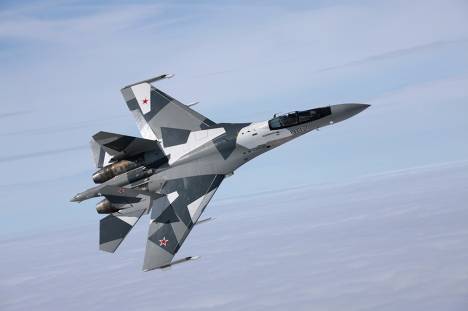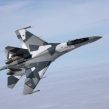
Beijing Denies Russian Rumors of Su-35 Purchase; Evaluating China’s Intelligence Penetration of Taiwan
Publication: China Brief Volume: 12 Issue: 6
By:

BEIJING DENIES RUSSIAN RUMORS OF SU-35 FIGHTER PURCHASE
Last week, Russian media reported Moscow was close to finalizing a $4 billion deal for 48 Su-35s with Beijing. The reported sticking point was that the Russian side wanted greater assurances that Chinese engineers would not reverse engineer the Su-35 and put it into domestic production like the Su-27, which is the model for China’s J-11 (Taipei Times, March 9; Kommersant, March 8; RIA Novosti, March 6). The report by the Russian newspaper Kommersant has generated a flurry of Western commentary; however, there is a striking difference between the Chinese-language and foreign-language coverage of this issue. China’s Ministry of National Defense (MND) has denied emphatically that such a deal is in the works, stating the press coverage is “not in accord with the facts” and the Su-35 “does not fit China’s national situation” (Caixun, March 12; Global Times, March 12). This discrepancy undermines Western analysis of the strategic implications of this announcement and suggests China’s defense aerospace industry is making sufficient progress to meet its military needs.
In a widely reprinted interview, Major General Wei Gang, a senior officer in the People’s Liberation Army Air Force’s (PLAAF) Armaments Department from 2004 to 2011, spoke about the PLAAF’s success in using indigenous innovation (zizhu chuangxin) to meet equipment needs. General Wei touted the J-10 as such an example, while conspicuously avoiding the J-11. Perhaps most importantly, Wei commented that the copying of foreign equipment does not get the PLAAF what it needs and “we must develop forces that meet the needs of China’s developmental circumstances” (China Central Broadcasting, March 9; People’s Net, March 9).
This interview, in combination with MND’s denial, suggests the Kommersant report may be simply rumor—or, alternatively, Beijing is trying to save face by denying the Su-35 deal was ever serious, knowing China’s aerospace industry would not honor the Russian request not to reverse engineer their technology. Giving credence to Beijing’s story over the Russian version suggests Chinese aerospace firms finally may be producing jet engines of the quality needed for advanced fighters—an area where they long have struggled [1]. At a minimum, the Chinese story, if true, would indicate the PLAAF does have its development well in hand and does not have a projected fighter shortfall like the United States and Taiwan.
***
EVALUATING CHINA’S INTELLIGENCE PENETRATION OF TAIWAN
On February 29, Taiwan announced yet another espionage case involving the Chinese intelligence services. The Chinese reportedly received classified materials from a Taiwanese Air Force captain named “Chiang,” who worked in an office similar to a regional operations control center (China Post, March 1; Taipei Times, February 29). The case raises several questions that countries friendly with Taipei should consider before condemning the Taiwanese government as so penetrated to be irrelevant. The same concerns should be mirrored in Taipei as a call for more transparency with allies.
The case is typical of Chinese intelligence operations against Taiwan (See, “Taiwan Espionage Cases Highlight Changes in Chinese Intelligence Operations,” China Brief, July 1, 2011). Again, the operation developed after intelligence officers approached a Taiwanese businessman, “Chiang’s” uncle, inside China, demanding that he assist them in acquiring Taiwanese secrets and offering to pay him if he did so. During return trips to Taiwan, “Chiang’s” uncle solicited his support in providing the Chinese with sensitive information on Taiwan’s Air Force (Wen Wei Po, March 1; Taipei Times, February 29).
The “Chiang” case once again raises serious if unanswerable questions about Taiwanese counterintelligence and Chinese intelligence operations:
- How much damage did “Chiang” do to Taiwanese security?
- To what extent are Chinese intelligence organizations targeting Taiwan’s Command, Control, Computers, Communications, Intelligence, Surveillance and Reconnaissance (C4ISR) systems?
- To what extent are Taiwanese government institutions penetrated by Chinese intelligence?
Damage Assessment: As seems to be the normal procedure for Taiwan’s Ministry of National Defense (MND), the spokesman, Lo Shao-he, downplayed concerns about the damage from “Chiang’s” spying: “The situation is not as serious as is described in the [media]” (Central News Agency, February 29). Although the rapid denial appears disingenuous, Taiwanese media reported “Chiang” provided information on Taiwan’s early warning radar, E-2T/E-2K Hawkeye surveillance aircraft, and the national air defense network (Taipei Times, February 29). The investigation may be ongoing, but the fact that Taiwanese investigators identified the scope of the damage so quickly suggests the MND could very well be right. The real question now is how was “Chiang” removing data—electronically or by hard copy—because it affects how much technical data was delivered to China.
Chinese Targeting: The number of cases in recent years involving Taiwan’s C4ISR demonstrate Beijing’s interest in it as a target of intelligence. It is not clear, however, whether these are simply collection requirements to be used as appropriate or whether these individuals were targeted because of their access to C4ISR information (Taipei Times, February 29; China Times [Taiwan], February 9, 2011; Taipei Times, February 20, 2008). The inclination is to credit the Chinese intelligence services with superior knowledge and malice aforethought; however, observers should be cautious, and there are many examples of opportunism. If most Chinese espionage cases involve picking up Taiwanese businessmen in the People’s Republic and using them to access Taiwanese government officials, then the deliberateness or opportunism of China’s spies will depend on how well they can investigate the background and connections of those businessmen.
Penetration of Taiwan: The normal elements of Taiwanese espionage cases in fact militate against really successful operations, because the Chinese intelligence services are several steps removed from the information they are trying to get. Many Taiwanese spies provide small selections of documents or their own reports that they can mail or fax to China or hand over to the intermediary. Additionally, very few Taiwanese traitors operate for very long inside Taiwan, suggesting military security and the Ministry of Justice Investigation Bureau are relatively effective. Continuing successes in recruiting spies from senior ranks of the Chinese government also suggest Taiwan maintains some security, or these operations never would have gotten off the ground (“General’s Spy Comments Reveal More Than Just Espionage,” China Brief, September 2, 2011).
There are few easy answers to these questions and certainly none that can be considered authoritative outside the Taiwanese government. For those governments and individuals concerned about Taiwan’s security, a little more conscious evaluation probably is in order before throwing up one’s hands entirely. Public answers about the damage of espionage must necessarily be circumspect lest still valuable intelligence methods become widely known; however, Taipei probably should remember the value of reassuring its allies in private.
Notes:
- Phillip Saunders and Joshua Wiseman, “Buy, Build, or Steal: China’s Quest for Advanced Military Aviation Technologies,” China Strategic Perspectives, No. 4, National Defense University, Center for the Study of Chinese Military Affairs, December 2011.





